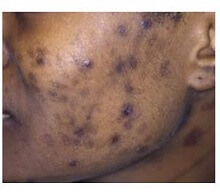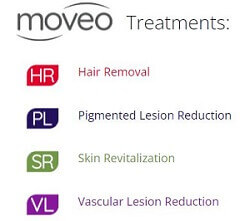The Journal of the American Academy of Dermatology (JAAD) recently published an interesting new article titled: “An update on cosmetic procedures in people of color.” Also on Instagram. It is part 1 of a series of papers that I am looking forward to reading this year. It seems like the AAD is finally focusing heavily on dermatological problems in darker skinned people.
The vast majority of before and after cosmetic treatment photos that you see online are of lighter skinned individuals. This situation is slowly changing to better reflect the diverse nature of the US population, where one-third of people are now of a darker complexion. Make sure to read my recent post on the use of machine learning in improving darker skin representation in medical textbooks and schools.
Differences in Fair versus Dark Skin
Note that the authors of this update are Dr. Rebecca L. Quiñonez; Dr. Oma N. Agbai; Dr. Cheryl M. Burgess; and Dr. Susan C. Taylor. The article starts with an interesting table that delineates key difference in dark versus light skin. Dark skin is defined as skin type 3-6 on the Fitzpatrick scale.
Of interest:
- Dark and light skinned people have the same melanocyte quantity and size.
- However, the melanosome size is much larger in dark skin. Moreover, the melanosome distribution is throughout the epidermis of darker skinned people. In lighter skin, it is contained in just the stratum basale and Malpighian layer.
- People with darker skin have melanin type Eumelanin. Lighter skin consists of melanin type Pheomelanin. Not surprisingly, darker skin has much higher levels of melanin versus lighter skin.
Skin Problems in People of Color

Among the photos in this article is the one on the right from Dr. Burgess that shows how severely a person of color (African American in this case) can get impacted by problems such as post-inflammatory hyperpigmentation (PIH). The authors also outline differences in the facial skin aging of people of the main ethnicities in the US (White, Black, Hispanic and Asian). Moreover, morphological differences and varying cultural preferences mean that even people of color can not be considered as a monolithic entity (in terms of desired outcomes from surgeries and procedures).
Some conditions are more common in certain ethnicities (e.g., seborrheic keratoses in African American women). Different racial and ethnic groups are also more of less likely to suffer from post-inflammatory hyperpigmentation (PIH). The authors suggest focusing on other measures of skin types besides the most popular Fitzpatrick (FST) scale. Among alternatives include the Roberts Skin Type Classification System (RSTCS). This is a 4-part scale that is used to “assess and assign a numerical value to a patient’s phototype, hyperpigmentation, photoaging, and scarring capability”.
Cosmeceutical Agents and Melanogenesis Inhibitors
There now exist a wide range of cosmeceutical agents for people of color (POC). These can be used for pre-procedure and post-procedure management, as well as to address daily cosmetic concerns. I will be writing about these in detail on this blog in separate posts in the coming months. Note that even some non-prescription strength skin lightening creams can cause side effects with overuse, so always consult a dermatologist before use.
In this JAAD paper, the authors highlight some cosmeceutical agents and melanogenesis inhibitors that are popular in treating hyperpigmentation in darker skin types. Most of these act as tyrosinase inhibitors.
- Hydroquinone.
- Topical retinoids.
- Hydroxy acids (lactic, glycolic, salicylic acid).
- Azelaic acid.
- Kojic acid.
- Licorice extract.
- Niacinamide.
When it comes to anti-aging, among the products that are commonly used by people of color include: antioxidants, peptides and growth factors. Photoprotection via sunscreen use is significantly lacking in the black population.
